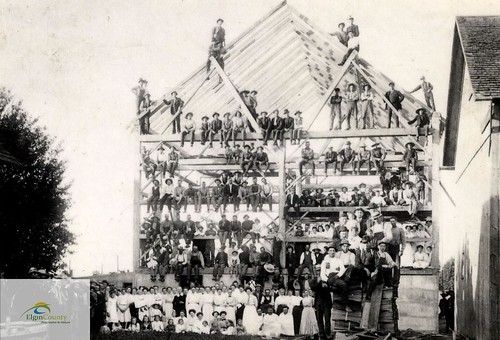The setting is a familiar one. A teacher sits across the table from an administrator. Both have note taking devices in front of them. The teacher – a spiral notebook and a pen he found on the floor after his last class. The administrator – an iPad with stylus.
They begin their debrief of the lesson the administrator has just observed. She pulls up the lesson plan the teacher submitted the day before using the district-approved template.
“I noticed the learning objective wasn’t on the board,” the administrator begins after some small talk.
And we’re off to the races.
While several pieces of the above scenario are glaringly unsettling, the piece to be focused on is not even mentioned.
In the schools we need, the adults must be working from a common and co-created definition of success.
When our teacher and administrator and their real-life counterparts at schools across the country sit down to de-brief, they are not likely to have a conversation about what a successful lesson looks like in the eyes of each other.
As such, any debrief conversation is likely to sound much like each person talking about an element they saw as successful (or not) and the other responding by attempting to fit that element into their own definition or argue against its importance.
A favorite question to ask school and district leaders at the top of any school year is, “What are three things you would like to achieve in order to count your school or district as successful this year?”
For most, such a frank and open question is met with a long non-answer that ends with, “all children being successful.” If we’re really lucky, they’ll also throw in “lifelong learners.”
Learning spaces that engage in conversations about their definitions of success are doing more than setting goals, they are setting culture as well. As Harvard Graduate School of Education Professor Richard Elmore says, “Language is culture.”
By defining success together, administrators and teachers sidestep a language imbalance where discussions of teaching and learning are loaded with the language of administrators and result in teachers attempting to translate what they do into that language. Such unequal conversations are classroom-level instances of educational colonialism where the teachers are the colonized.
Instead, imagine a meeting at the close of a school year where all of the adults in the school sit together and are asked to write their responses to two questions:
- Were we successful this year?
- What makes you say that?
Two simple questions with the ability to uncover great swaths of unspoken cultural beliefs within the organization.
Move forward to the re-convening of the school the next Fall. Rather than standing in front of those assembled and speaking to them as though the year ahead and the people it will include are wholly separate from the previous school year, the principal returns to the questions with which the school concluded that last year.
“Here is how we defined success last year,” she says and distributes a listing of people’s anonymous responses grouped by similarities. “The question we must decide moving forward is, “How will we, as a learning organization, decide to define success this year?”
From there, the hard work begins of moving from a group of adults tacitly assuming they’re working toward the same measures of success to explicitly stating the standard toward which they will be working that year. Uncovering assumptions is a difficult and sometimes painful task. It may result in some teachers realizing their visions of success do not align with the goals of the school and thereby asking them if they are willing to re-align their definitions or asking if it is time for them to find another community better-synced with their beliefs.
The difference here is the co-creation of success and the ownership of all adults of the definition.
Returning to our teacher and administrator de-brief, imagine the conversation they are able to have and the language they will share as a result of their shared definition of success. Imagine the democracy of such a school.






